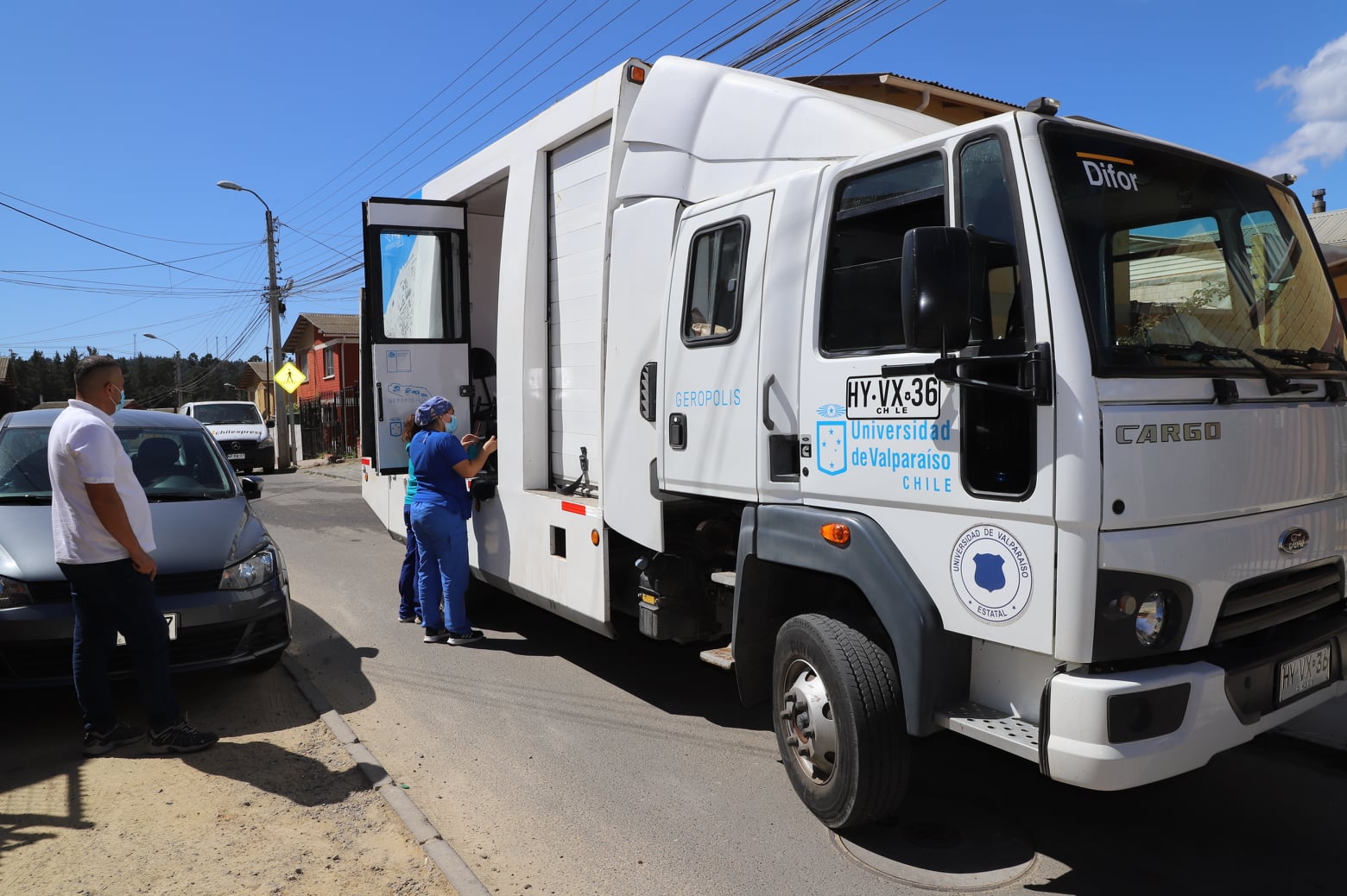Chile has the highest level of COVID vaccinations in Latin America and, at a rate of almost 90%, one of the best in the world.
Vaccinations have enabled life in Chile to return to normal. People are back at work, children have returned to school, universities and public services have reopened. 90% of Chile’s older people have been vaccinated and that is continuing to grow.
HelpAge network member Gerópolis Centre of the University of Valparaíso, a coastal city located 115 km from the capital Santiago, works since 2015 to promote ‘Ageing in place’ and respond to older people’s needs. We spoke to Alessandra Olivi, programme coordinator, and Viviana García, executive director of Gerópolis Centre to find out about the how Chile’s successful vaccination campaign had been rolled out. And we also learned about their secret weapon in the fight against COVID-19: the Geromobile.

© Gerópolis Centre
The Geromobile
The city of Valparaíso is very hilly and not easy to get around, particularly for any older people who struggle to walk or use public transport.
So the university’s Gerópolis Centre devised the Geromobile, a specially adapted vehicle which can reach older people in the most inaccessible areas.
During the pandemic, from Monday to Friday, the Geromobile travels through the city, going up and down its many hills and into the surrounding areas. It visits older people in their homes, with a nurse and a supply of vaccines.
This makes it possible for 15 to 20 vaccinations to be carried out every day, bringing protection to people who might have struggled to reach a vaccination centre. And even though the Geromobile is designed to reach older people, other people sometimes approach when they see it in the neighbourhood, and know that this is an opportunity to get vaccinated.
“The Geromobile was originally designed by engineers in our centre a few years ago. We designed it thinking about what features would be useful for older people, especially in the most vulnerable communities. We worked with older people from these communities and asked them what needs they have – for example, health services, cultural activities, and the like. We tried to implement every possible function in the structure of this vehicle. This vehicle was adapted from a regular truck and turned into the Geromobile,” explains Alessandra Olivi.
The Geromobile is equipped with a medical care box, tables and chairs for workshop, and it can even transform into a small theatre stage. There is audio-visual equipment and it can be used as a cinema.
The Geromobile was funded by the National Education Fund, together with the establishment of the Geropolis Center at Valparaíso University. For a public university it was hard to obtain this vehicle – they needed many administrative permissions – and the vehicle is difficult to support. But it is worth it, because the Geromobile helps to respond to the real needs of older people where they live, promoting ageing in place.
Before the pandemic, the Geromobile was used for five to six activities each year. But now its capabilities are being used at full capacity in supporting older people around the city. In 2020, it was used to distribute food and hygiene kits, and since February 2021 for vaccinations.
In this video you can see how the Geromobile works and how it was built:
What is the reason for Chile’s vaccination success?
According to Geropolis, the main reason of high vaccination rate is that Chile has a very successful model of community healthcare. Family healthcare centres can be found in every neighbourhood and they keep in close contact with the people they serve. They also work very closely with community services, as well as with sports and church organisations in the communities.
This strong level of community relations made it much easier to identify who needed to be vaccinated and how to reach them.
The government also committed to acquiring the vaccines needed for the country. They started with a small amount of Pfizer vaccines, and then followed with large quantities of the Chinese Sinovac and CanSino vaccines. AstraZeneca was also purchased. Healthcare workers and the older people received the Pfizer vaccine because it came first.
“What also played its role in Chile’s success that there is no particular hesitancy towards vaccination. From childhood, every Chilean is familiar with vaccines, and people trust them. Over the years, there have been many campaigns to promote vaccination for measles, flu and other diseases. The vaccination strategy has been refined and well tested. This meant that people willingly went to get vaccinated against COVID-19 and were not afraid to do so”, says Alessandra Olivi.
By Vitaliy Konovalov, Communications Manager, HelpAge International
